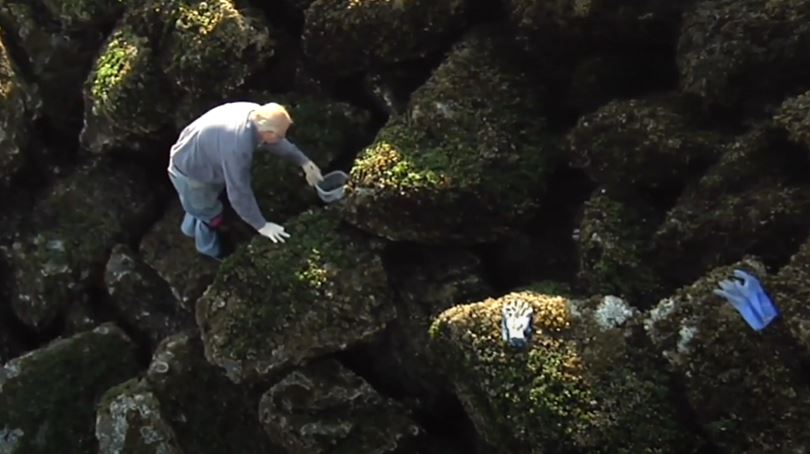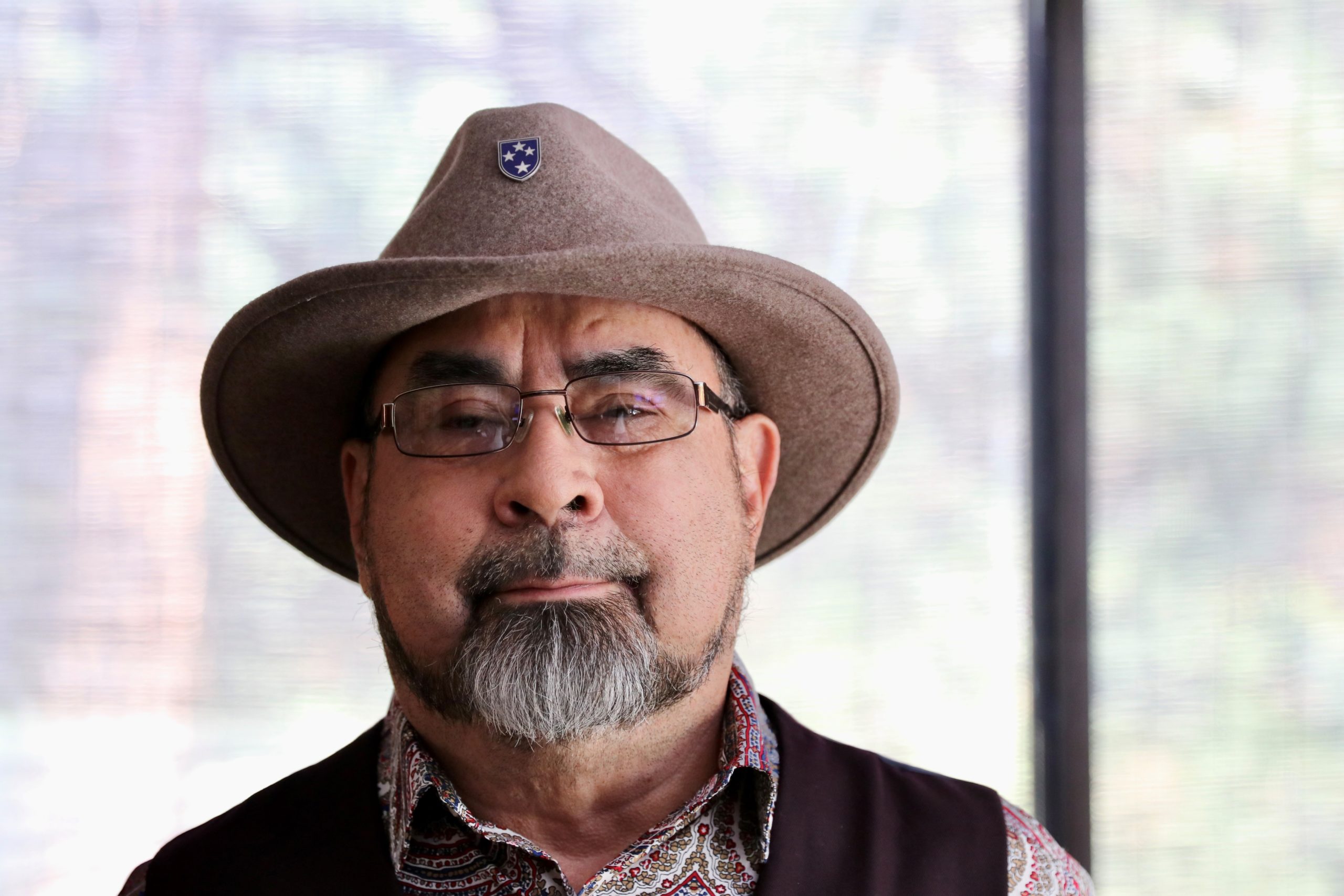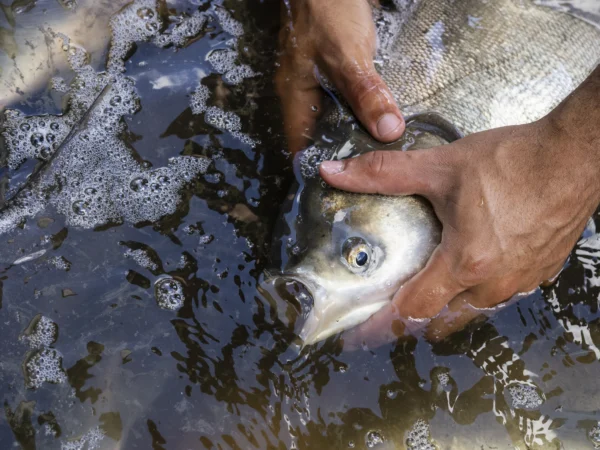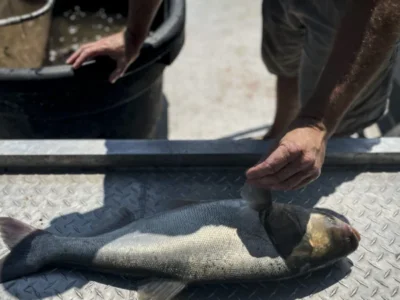
As the official newspaper of the Confederated Salish and Kootenai Tribes of the Flathead Indian Reservation, the Char-Koosta News has frequent coverage of environmental issues in western Montana especially in tribal lands and waters.
One of those issues is invasive mussels – the same zebra and quagga mussels that plague the Great Lakes and inland rivers and lakes throughout the region.
“The tribes in western Montana, along with the state of Montana Fish, Wildlife and Parks, are working to prevent the zebra and quagga mussels from spreading in the Flathead and Columbia rivers basins,” said Bernard Azure, assistant editor and reporter for the newspaper, published for and about the Confederated Salish and Kootenai Tribes. “The Columbia River Basin is the only river basin in the United States that is not infected with the zebra and quagga mussels.”

Bernard Azure, assistant editor and reporter for the Char-Koosta News
Zebra mussels were first discovered in the Great Lakes in the late 1980s, with quagga mussels following soon after, both brought over through ballast water discharged by large ships from Europe. Spreading rapidly, they have cost the region billions of dollars in mitigation efforts as they coat water intake plants, filter out the nutrients in the water, overtake native mussel populations and more. Currently the mussels can be found in all five of the Great Lakes.
Aquatic invasive species, including mussels, were one of the most important issues identified by Great Lakes-region residents in the International Joint Commission’s 2020 Triennial Assessment of Progress Report on Great Lakes Water Quality.
Through their new partnership, Great Lakes Now and the Char-Koosta News will share stories about the invaders.
“Part of our mission at Great Lakes Now is to create a shared understanding of Great Lakes issues,” said Natasha Blakely, news director. “Now we’ll be able to add to our audience’s knowledge of invasive mussels with stories on the problem out west, which will provide more context about research and solutions as well.”
The collaboration kicks off with Great Lakes Now publication of several Char-Koosta News stories:
Invasive mussels found in aquarium moss balls sold in Montana
Cost of a zebra and quagga mussel infestation
If it’s summerish time, it’s mussel time
The Char-Koosta News has already published GLN stories and will share the recent Great Lakes Now episode from the monthly program that was dedicated to the invaders.
Watch the segment:
API key not valid. Please pass a valid API key.Home to the Confederated Salish and Kootenai Tribes, the 1.3 million-acre Flathead Indian Reservation is located north of Missoula, Montana. The Tribes are the owners of the southern half of Flathead Lake and have extensive water-related treaty rights that were articulated in the 1855 Hellgate Treaty and affirmed in numerous water rights court cases including before the U.S. Supreme Court.
The Tribes’ rights extend from the Flathead and Columbia rivers basins in western Montana to river basins in much of eastern Montana.
The recently passed U.S. Senate bill 3019, known as the Montana Water Rights Protection Act, has settled the CSKT Federal Reserved Water Rights Compact that articulated and affirmed the CSKT’s extensive water rights claims. As a result, the CSKT have rights that maintain instream flow levels, some in partnership with the state of Montana in nearly two-thirds of the river basins in the state.
Great Lakes Now is an initiative based at Detroit Public Television. With its website updated daily and a monthly program broadcast on dozens of PBS affiliates and hundreds of Canadian cable providers, GLN helps audiences learn more about the Great Lakes and drinking water issues. Visit GreatLakesNow.org for more.
Other current Great Lakes Now collaborations include:
PBS Partner Stations
More than two dozen PBS channels around the Great Lakes region have aired the monthly program, and the San Bernardino, California, station aired an episode that explored the national issues of mining, dam removal and invasive carp. PBS stations also have contributed segments and footage to the program as well as co-hosted our Facebook watch parties that happen the last Tuesday of each month.
The Great Lakes News Collaborative
This ongoing initiative includes Bridge Michigan; Circle of Blue; Great Lakes Now at Detroit Public Television; and Michigan Radio, who work together to bring audiences news and information about the impact of climate change, pollution, and aging infrastructure on the Great Lakes and drinking water. This independent journalism is supported by the Charles Stewart Mott Foundation. Find all the work HERE.
Covering Climate Now
As a global journalism collaboration aiming to strengthen coverage of the climate story, Covering Climate Now makes available to Great Lakes Now stories and video from around the world that are relevant to news about issues affecting the Great Lakes and drinking water.
Institute for Nonprofit News
With a network of more than 200 nonprofit newsrooms across the U.S., the mission of the Institute for Nonprofit News is to strengthen the sources of trusted news for thousands of diverse communities. The Pulitzer Center awarded INN a grant as part of the “Connected Coastlines” project, which INN in turn used to coordinate the project “From Rust to Resilience: What climate change means for Great Lakes cities” with Great Lakes Now and several other newsrooms. Great Lakes Now also regularly publishes articles from Flint Beat and MinnPost through the INN collaboration.
Great Lakes Echo
Produced by the Knight Center for Environmental Journalism at Michigan State University, the Great Lakes Echo publishes articles about the Great Lakes and the environment reported and written by students. Great Lakes Now republishes the work and will host a summer intern from the program.
The Alpena News
To expand and deepen coverage of Lake Huron, The Alpena News’ regular coverage of marine sanctuary research, Lake Huron’s fishing and other recreational activity and watchdog journalism will appear on Great Lakes Now’s website. Through this partnership, Alpena News stories will reach a larger audience and Alpena News readers will see Great Lakes Now stories and be able to view segments from Great Lakes Now’s monthly TV program on the paper’s website.
Wisconsin Watch
A formal collaboration is in development so watch for a published and broadcast project later this year. Meanwhile, Wisconsin Watch investigative editor Jim Malewitz joined the Great Lakes Now watch party to answer viewer questions about Enbridge and its work and controversies in the region.
Monthly Watch Party Hosts
First Fridays: Co-hosted by Belle Isle Conservancy, WDET-Detroit’s NPR station, and the International Institute for Sustainable Development – Experimental Lakes Area, this series of watch parties entertains and educates about Detroit’s Belle Isle, the Detroit River and related Great Lakes issues. Full playlist HERE.
Last Tuesdays: As PBS stations in Detroit and Watertown, New York, air a new episode of the monthly program, GLN simultaneously offers a live watch party on Facebook. Co-hosted by numerous partners – they change each month depend on the subjects in the show. Full playlist HERE.
Featured image: Invasive mussels cover a variety of surfaces in the Great Lakes. (Photo by Great Lakes Outreach Media)




